2) Macroscopic response
a) Model description:
We solve the wave equation in 2D cylindrical or 3D Cartesian geometry, depending on the problem under consideration, using either a finite difference or a pseudo-spectral method. Different approximations can be made, from the paraxial and slowly varying envelope approximations to the solution of the full wave equation. The source term is given by the solution of the Schrödinger equation in the strong field approximation (SFA).
b) Applications:
- HHG with twisted beams:
Twisted beams, e.g. Laguerre-Gauss (LG) beams, carry orbital angular momentum (OAM). They allow producing high-order harmonic beams with angular momentum lq = q×l1, of great interest for many fundamental studies, such as the exchange of OAM in light-matter interactions. Different generation configurations could be used: single beam, collinear two-color beams, or one-color crossing beams.
The pictures below depict the far-field diffraction patterns of H27, produced by two LG beams, crossing with a small angle at focus. The main beam, carrying an lm = +1 OAM, diffracts on the transient grating produced by the perturbative beam, carrying an lp = ±2 OAM. The series of rings with increasing or decreasing radii correspond to diffraction orders with increasing or decreasing OAM. When lp = -2 (top picture), the OAM decreases from the right to the left. The situation is reversed when lp = +2 (bottom picture).
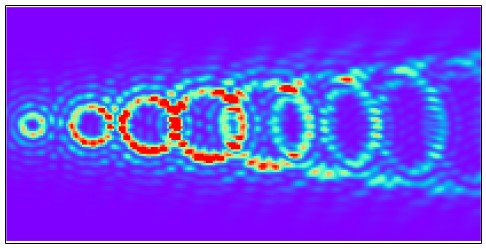
Far-field diffraction pattern of H27 produced by two crossing beams carrying lm = +1 and lp = -2 OAM.
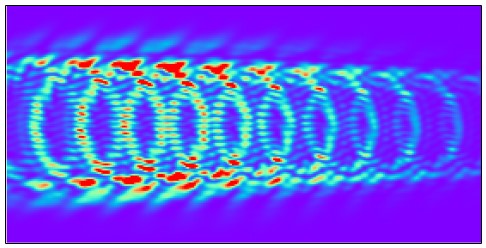
Far-field diffraction pattern of H27 produced by two crossing beams carrying lm = +1 and lp = +2 OAM
Reference : R. Géneaux, A. Camper, T. Auguste, O. Gobert, J. Caillat, R. Taeïb, and T. Ruchon, Nat. Commun. 7:12583 doi: 10.1038/ncomms12583 (2016).
- Attosecond lighthouse generation:
When focused, an incident beam with spatio-temporal coupling leads to wavefront rotation (WFR) at focus, and pulse front tilt out of focus. WFR is currently used for producing attosecond bursts in different directions. This is known as the “lighthouse effect”. Attosecond lighthouse is particularly well suited for multiple attosecond probe beam experiments.
The pictures below show focused laser pulses without (top) and with (bottom) WFR. The following pictures depict the generated attosecond pulse trains. When WFR is off, the attosecond bursts, produced each half cycle, are emitted in the same direction. By contrast, when WFR is on, the bursts are emitted in different directions.
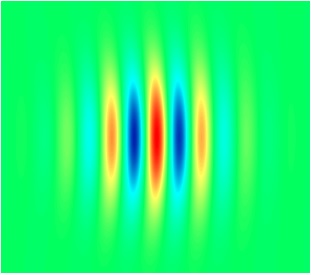
Focused laser field without WFR.
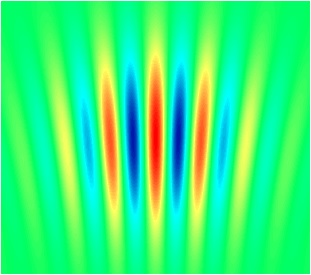
Focused laser field with WFR.
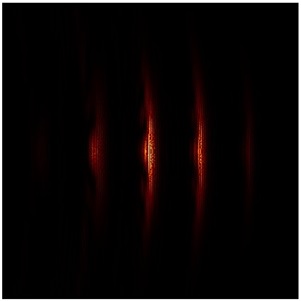
Attosecond pulse train generated by a driving pulse without WFR. The attosecond pulses are generated in the same direction.
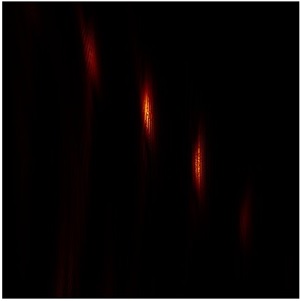
Attosecond pulse train generated by a driving pulse with WFR. The attosecond pulses are generated in different directions.
Reference : T. Auguste, O. Gobert, T. Ruchon, and F. Quéré, Phys. Rev. A 93, 033825 (2016).


